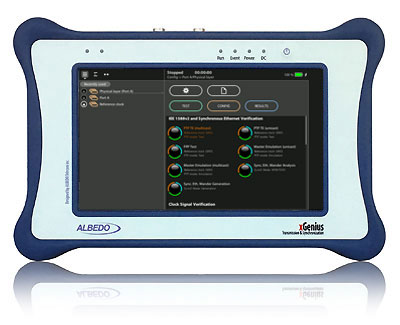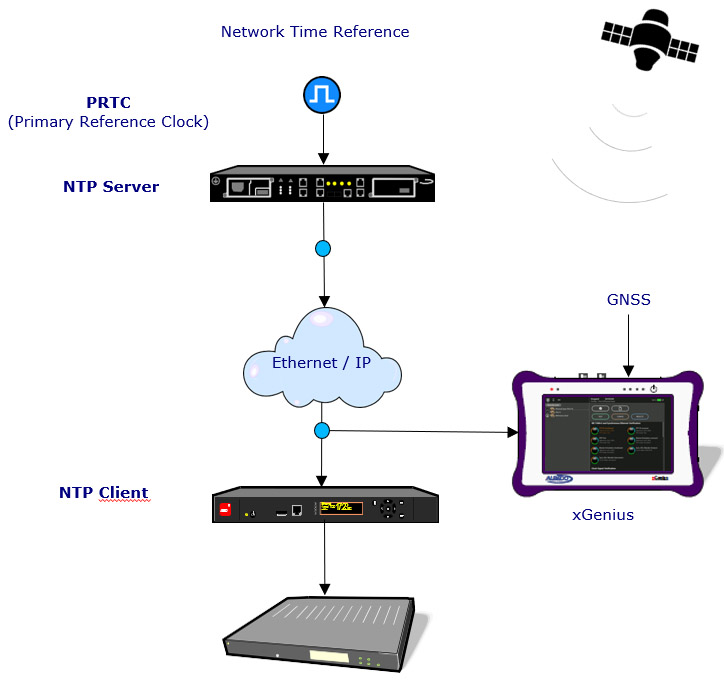Testing NTP with xGenius
NTP remains relevant due to its simplicity, widespread adoption, lower costs, and suitability for scenarios where ultra-high precision is not a critical factor.
MIAMI NOV.23.2023
NTP is still important despite PTP
Network Time Protocol (NTP) and Precision Time Protocol (PTP) serve different purposes in different contexts within the time synchronization arena. While PTP offers greater accuracy than NTP, both protocols are still relevant today for a variety of reasons:
- Cost: PTP provides sub-microsecond accuracy and is well suited for applications that require very precise timing, such as utility automation, financial trading, and wireless communications. However, achieving this high level of accuracy comes at a higher cost in terms of hardware and infrastructure. NTP is not as accurate, but is often sufficient for many applications.
- Ubiquity: NTP has been used for synchronization in various industries for decades. Many existing applications and devices use NTP, so migrating to PTP can require significant effort, so many organizations continue to use NTP unless they need more accuracy.
- Simplicity: NTP is easy to implement, deploy, and maintain, making it a choice for non-critical scenarios. PTP, on the other hand, can be more complex to deploy and manage.
- Availability: NTP servers are widely available and accessible on the Internet, providing a reliable source of time synchronization. PTP requires a more controlled and specialized environment and may not be widely available.
- Compatibility: NTP is backward compatible with older versions, ensuring that systems with different NTP implementations can still effectively synchronize time, which is important for maintaining universal interoperability.

Fig 1. NTP is the most popular timing protocol in the Internet.
PTP provides superior accuracy and is the preferred choice for applications with high synchronization requirements, but NTP remains for the above reasons, then the choice between NTP and PTP depends on the specific requirements of the application. In addition, some systems may use a combination of both to meet different synchronization requirements.

Fig 2. NTP protocol
xGenius
xGenius provides in-depth insight into the design, installation, maintenance, troubleshooting and engineering of Smart Grid communications infrastructures. The unit can test Ethernet/IP, PTP, GbE, IRIG-B, T1/E1, G703, C37.94 and GOOSE, SV and MMS protocols. One-way delay testing, supported by GPS, is available on all interfaces. Zeus has a set of programmable filters to capture live traffic at wire speed. You can now analyse GOOSE, SV, MMS and other protocols to decode and store them in PCAP format or calculate propagation delay from local or remote substations.

Fig 3. Tester designed to turn-up Ethernet networks.
Features
- NTPv3 / NTPv4 server and client emulation. Test mode to verify performance of NTPv3 / NTPv4 servers
- Support of hardware-assisted time stamping for Network Time Protocol (NTP)
- Configuration of protocol version, server address (IP address or domain name) and polling interval in client emulation and test modes
- Configuration of protocol version, stratum level and reference id in master emulation mode

Fig 2. Testing NTP with xGenius or Zeus.


